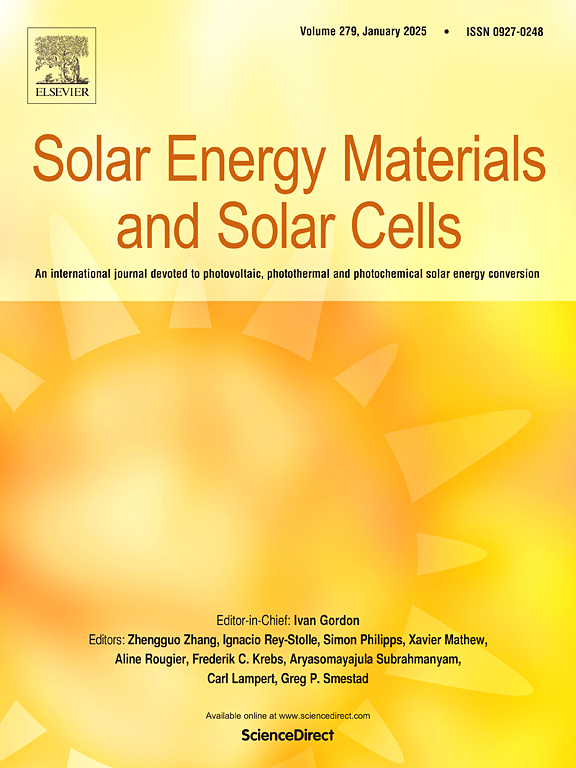Performance degradation in GaSb thermophotovoltaic cells under proton and electron irradiations
IF 6.3
2区 材料科学
Q2 ENERGY & FUELS
引用次数: 0
Abstract
This study reports on the proton and electron irradiation-induced performance degradation in GaSb thermophotovoltaic cells. GaSb cells and GaSb single crystals were irradiated using 100 MeV and 100 keV protons and 1 MeV electrons. Through measurement of cells and single crystals and simulation of irradiation experiments, it is found that 100 MeV protons penetrate the whole GaSb cell and produce uniformly distributed irradiation damage in the functional layer of the cell, and the maximum power (PMAX) of the cell decreases to 69 % when the proton fluence reaches 1 × 1012 p/cm2. 100 keV protons are mainly injected in the PN junction region of the cell, and when the fluence is 3 × 1011 p/cm2, the PMAX decreases to ∼10 %, and the cell basically fails completely. 1 MeV electrons penetrate the PN junction region to reach the base area, and more than 95 % of the electron energy is deposited inside the cell, and the PMAX decreases to 63 % when the electron fluence reaches 1 × 1016 e/cm2. Proton and electron irradiations did not lead to significant structural damage in GaSb single crystals, but probably introduced Ga vacancies or vacancy cluster, which act as non-radiative recombination centres, reducing the carrier lifetime and concentration in the PN junction region of the GaSb cell, leading to degradation of its performance. This study informs the application of GaSb cells in radioisotope thermophotovoltaic systems.
求助全文
约1分钟内获得全文
求助全文
来源期刊

Solar Energy Materials and Solar Cells
工程技术-材料科学:综合
CiteScore
12.60
自引率
11.60%
发文量
513
审稿时长
47 days
期刊介绍:
Solar Energy Materials & Solar Cells is intended as a vehicle for the dissemination of research results on materials science and technology related to photovoltaic, photothermal and photoelectrochemical solar energy conversion. Materials science is taken in the broadest possible sense and encompasses physics, chemistry, optics, materials fabrication and analysis for all types of materials.
 求助内容:
求助内容: 应助结果提醒方式:
应助结果提醒方式:


